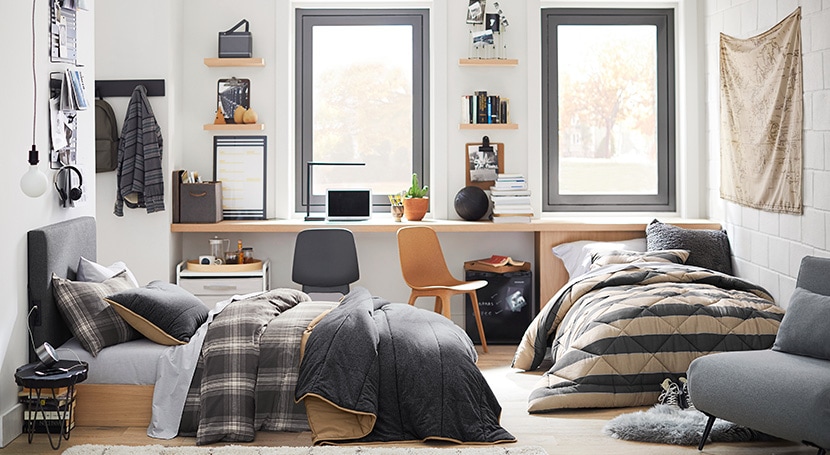How to Patch a Dorm Room Wall
Maybe you slipped or a piece of furniture fell. No matter how it happened, the end result is a hole in your dorm room drywall. But don’t worry! Fixing holes in the wall is an easy do-it-yourself project that you can complete with just a few quick steps and a little wait time. Ready to repair? Here are the simple steps to fix that hole in your wall in no time at all!

Figure Out the Extent of the Damage
Each hole has a solution, but different types have different processes. It helps to know what type of hole you’re patching up. Small holes are less than 2" square, and medium holes are up to 4" across. For larger holes that are wider than 4" across, it’s best to call in a professional due to wiring and safety concerns.

What You Need for a Small Hole
To fix light damage to the wall, pick up the following materials; they’re readily available in home improvement stores. Many of these stores also rent electric tools like sanders by the hour, so don’t worry about buying one for the project.
• Utility knife with a fresh blade
• Spray bottle with water
• Non-shrink joint compound
• Putty knife
• Drywall sandpaper
• Drywall sander (optional)

How to Patch a Wall with a Small Hole
Here’s how to repair 2" wall imperfections. To avoid future nail holes, try no-nails decor when you’re all done.
• Clean the area: Cut away any loose material with the utility knife. Wet the surrounding surface a bit with your spray bottle. This helps the joint compound adhere firmly.
• Apply joint compound: Use your putty knife to spread enough compound inside and around the hole to fill the hole. It’s helpful to apply two or three thinner coats than a single thick one. That way, the putty doesn’t crack while drying.
• Even things out: Pull the putty knife towards you, keeping it as flat as possible against the wall. It’s totally fine if the layer isn’t perfectly smooth; you’ll sand it soon anyway.
• Wait for each layer to dry: Normal joint compound needs at least 24 hours to dry completely, or more if your dorm is especially humid. You can choose quick-drying compound that sets up in 20, 40 or 90 minutes.
• Sand and reapply compound: Once the wall is dry, grab your drywall sandpaper and sand the area lightly. If the hole still has a depression afterwards, add another layer of compound and repeat the process to get it level.

What You Need for a Medium-Sized Hole
The main steps for this repair are similar to those for a small hole, but they just require a few extra tools.
• Tape measure
• Carpenter’s square
• Carpenter’s pencil
• Drywall knife
• Utility knife
• Piece of drywall
• Drywall compound
• Putty knife
• Drywall sand paper

How to Repair a Medium Hole
Here’s how to fix a medium-sized wall hole in your room.
• Prepare the area: Using a tape measure and the carpenter’s square, draw a square around the damaged area of the wall. Then cut it out using the drywall knife. Try to cut only to the edges of the square, not beyond.
• Prepare your patch: Mark a square on the piece of spare drywall that’s 3" larger on each side than the one you just created in the wall. After you cut that patch out, draw a small square inside, leaving 3" between it and the edges of the piece. Using the utility knife, remove everything outside that line except for the thin layer of paper backing.
• Place the patch in the wall: It should slide neatly inside the hole with 3" of paper overlapping. Spread drywall compound underneath the paper so it sticks firmly to the wall. After that, apply drywall compound around the whole patched area.
• Dry and sand: Once the coat is dry, sand it lightly by hand until it’s smooth. Another coat probably isn’t necessary unless you notice imperfections.

Painting Tips
If the wall you’re fixing has light-colored walls, it’s usually easier to paint the whole wall with a roller. First, apply two coats of primer to the repaired area only. Make sure you wait for each layer to dry completely. Then, paint the wall with the color of your choice, and voila! Your space will look as good as new!






